A Note to the Learner
When it comes to learning Chinese, practice is essential, of course. This workbook offers you many options for practicing and polishing your language skills, and was designed to be used in conjunction with the book Basic Mandarin ChineseSpeaking & Listening . However, it may be used to hone speaking skills no matter which book or course youre using to learn Chinese.
There are no Chinese characters to be found here because you dont need characters to learn to speak Chinese. In fact, learning the characters for everything you learn to say is an inefficient way to learn Chinese, one that significantly slows down your progress.
To help you learn to speak and understand Chinese as efficiently as possible, this workbook gives you the Chinese language portions not via characters, but instead through audio featuring native speakers (on the accompanying  ). And in the pages of this book, the Chinese is represented in Hanyu Pinyin, the official Chinese romanization system.
). And in the pages of this book, the Chinese is represented in Hanyu Pinyin, the official Chinese romanization system.
If you wish to learn Chinese reading and writing, which is certainly to be recommended for most learners, you shouldtogether with or after the spoken courseuse the companion course Basic Mandarin ChineseReading & Writing . It corresponds with Basic Mandarin ChineseSpeaking & Listening and systematically introduces the highest-frequency characters (simplified and traditional) and words in context in sentences and reading passages as well as in realia such as street signs, notes, and name cards.
For instructors and those learners with prior knowledge of Chinese characters, a Basic Mandarin ChineseSpeaking & Listening Character Transcription is also available. It contains transcriptions into simplified and traditional characters of Basic Mandarin ChineseSpeaking & Listening . Please note that the character transcription is not intended, and should not be used, as the primary vehicle for beginning students to learn reading and writing.
The Basic Mandarin Chinese Instructors Guide contains detailed suggestions for using these materials as well as communicative exercises for use by instructors in class or by tutors during practice sessions.
Abbreviations
| Word Classes* |
| A | Adverb |
| AT | Attributive |
| AV | Auxiliary Verb |
| BF | Bound Form |
| CJ | Conjunction |
| CV | Coverb |
| EV | Equative Verb |
| EX | Expression |
| I | Interjection |
| IE | Idiomatic Expression |
| L | Localizer |
| M | Measure |
| MA | Moveable Adverb |
| N | Noun |
| NU | Number |
| P | Particle |
| PH | Phrase |
| PR | Pronoun |
| PT | Pattern |
| PV | Postverb |
| PW | Place Word |
| QW | Question Word |
| RC | Resultative Compound |
| RE | Resultative Ending |
| SN | Surname |
| SP | Specifier |
| SV | Stative Verb |
| TW | Time Word |
| V | Verb |
| VO | Verb-Object Compound |
Other Abbreviations and Symbols |
| (B) | Beijing |
| (T) | Taipei |
| lit. | literally |
| SV | Supplementary Vocabulary |
| AV | Additional Vocabulary |
| (indicates that what follows is incorrect) |
| / | (separates alternate forms) |
Footnote
For explanations of the word classes, see the section Word Classes of Spoken Chinese in Basic Mandarin ChineseSpeaking & Listening .
ABOUT TUTTLE
Books to Span the East and West
Our core mission at Tuttle Publishing is to create books which bring people together one page at a time. Tuttle was founded in 1832 in the small New England town of Rutland, Vermont (USA). Our fundamental values remain as strong today as they were thento publish best-in-class books informing the English-speaking world about the countries and peoples of Asia. The world has become a smaller place today and Asias economic, cultural and political influence has expanded, yet the need for meaningful dialogue and information about this diverse region has never been greater. Since 1948, Tuttle has been a leader in publishing books on the cultures, arts, cuisines, languages and literatures of Asia. Our authors and photographers have won numerous awards and Tuttle has published thousands of books on subjects ranging from martial arts to paper crafts. We welcome you to explore the wealth of information available on Asia at www.tuttlepublishing.com .
1. New Vocabulary
and Grammar Summaries
Unit 1, Part 1: New Vocabulary and Grammar
Vocabulary
| a | (softens sentence) [P] |
| bn | take care of, do [V] |
| do | to [CV] |
| hu | go back to [V] |
| K | Ke [SN] |
| nr | where [QW] |
| ne | and how about, and what about [P] |
| n ho | hi, how are you? [IE] |
| n | you [PN] |
| q | go [V] |
| shtng | cafeteria [PW] |
| sh(r) | matter [N] |
| ssh | dormitory [PW] |
| tshgun | library [PW] |
| Wng | Wang [SN] |
| w | I [PN] |
| y | also, too [A] |
| ydin(r) | a little [N] |
Grammar
A as final particle to soften questions, greetings, and exclamations: N do nr q a? And where might you be going?
DO...Q go to: Wng Jngshng do nr q? Where is Jingsheng Wang going?
Name + Greeting: Wng Jngshng, n ho! Jingsheng Wang, how are you?
Names: Wng Jngshng Jingsheng Wang
NE as final particle to abbreviate questions: W q shtng. N ne? Im going to the dining hall. And what about you?
Q + Place word to indicate go to a certain place: W q tshgun. Im going to the library.
Q + Verb to indicate purpose: W q tshgun bn ydinr sh. Im going to the library to take care of something.
Question Word Questions: N do nr q? Where are you going?
Unit 1, Part 2: New Vocabulary and Grammar
Vocabulary
| iren | spouse [N] |
| bba | dad [N] |
| du | all, both [A] |
| hi | still [A] |
| hizi | child [N] |
| ho | be good [SV] |
| ho ji b jinle | long time no see [IE] |
| hn | very [A] |
| le | (indicates changed status or situation) [P] |
| li | be tired [SV] |
| ma | (indicates questions) [P] |
| mma | mom [N] |
| mng | be busy [SV] |
| t | he, she [PN] |
| tmen | they [PN] |
| xin | first [A] |
| xixie | thank you [IE] |
| xng | be O.K. [V] |
| yu | have [V] |
| zijin | goodbye [IE] |
| zmmeyng | how, in what way [QW] |
| Zho | Zhao [SN] |
| zu | depart [V] |
Grammar

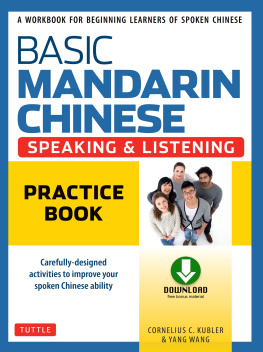


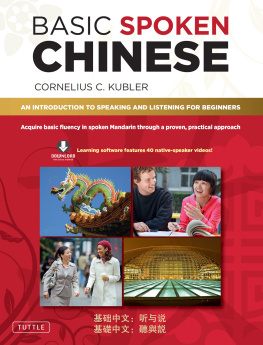
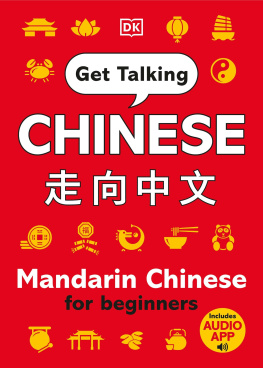

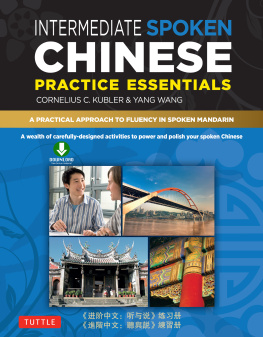

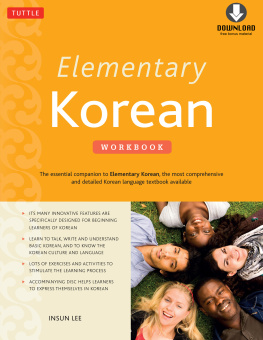
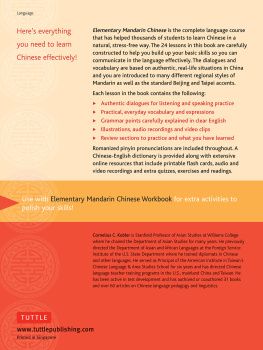
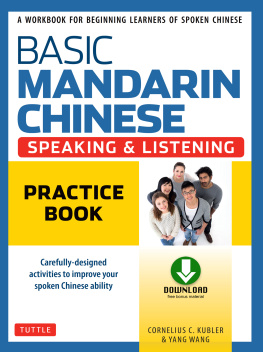
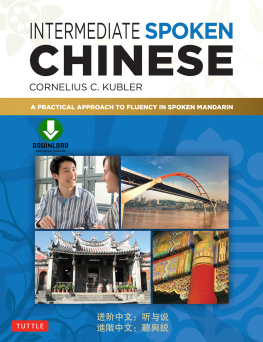
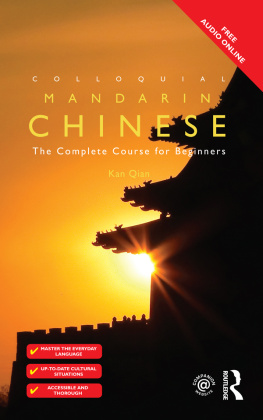
 ). And in the pages of this book, the Chinese is represented in Hanyu Pinyin, the official Chinese romanization system.
). And in the pages of this book, the Chinese is represented in Hanyu Pinyin, the official Chinese romanization system.